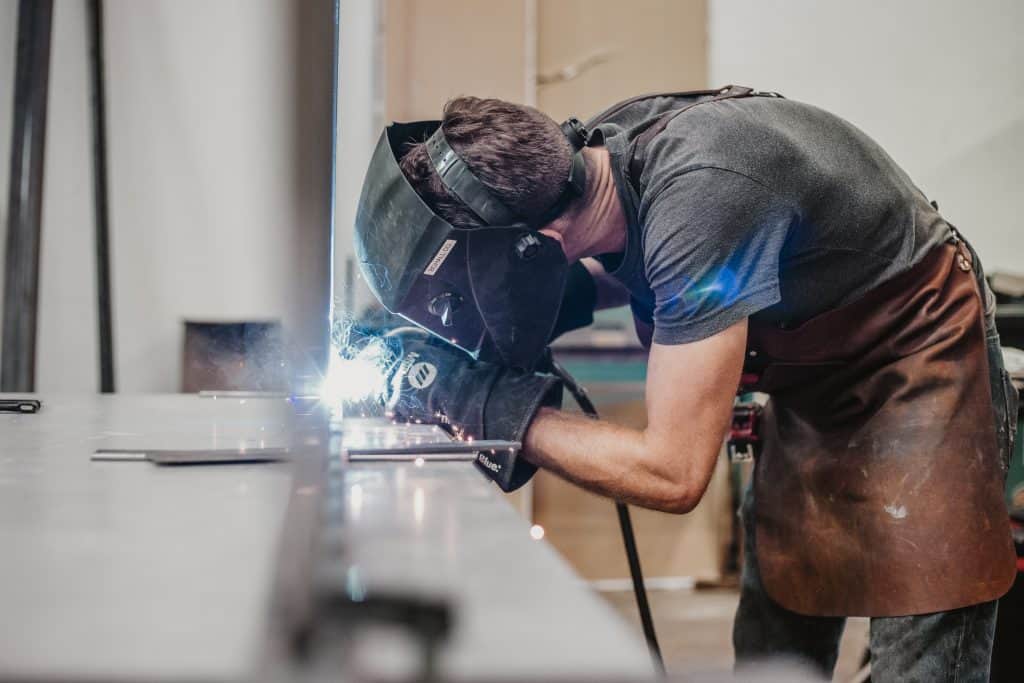Arc welding is what welders use to join metal in a variety of applications. It has been used for more than 50 years and is the most common type of welding today. This blog post will focus on what arc welding is, what you need to know about it, and why it’s the best choice for many jobs.
So what exactly is arc welding?
Arc welding involves passing an electric current through a consumable electrode which generates heat that melts metals together.
The electrodes are made from either one or two metals that react with each other when they come into contact and create molten welds at high temperatures while releasing slag (a solidified by-product). This process can be done using manual labor or automated equipment depending on what you’re welding and what type of metal is being joined.
For example, the electrodes can be made from aluminum or magnesium to join both steel and aluminum together, making arc welding an excellent choice for many jobs. The process has been used in automotive production lines since it was first introduced because it helps make cars lighter while also adding strength through the welds.
The biggest perk of arc welding is what it can do when compared to other types of welding:
- It’s a fast process which makes it ideal for large projects that require quick completion times and less cleanup work afterward. Welding with an open flame or gas takes more time because you must wait until the material has heated up.
- It’s precise, making it ideal for welding parts together, especially thin metal pieces that can’t handle the intense heat of other types of welding. Gas torches produce an open flame which creates a lot more waste than what you get from arc welding by melting both sides at once and not requiring additional filler materials.
- It’s clean, which makes it perfect for outdoor jobs like welding on a construction site where dust and debris can get in the way of other types of projects. There isn’t any flame, smoke, sparks, or slag that you have to deal with, so your work area stays safe while producing less waste overall.
Arc welding is what we recommend for almost all types of metalwork because it’s faster than other options, more precise with less waste, and produces cleaner results. If you have any questions about what type of equipment you need or what metals can be welded together, please ask one of our experts today! We’re always happy to help out in any way possible.
What type of equipment do you need for arc welding?
Arc welding comes in several different forms, so what you will need really depends on what type of job you’re working on and what kind of metal surfaces will be joined together.
There are three main types:
Spot-welding
One way to complete the connection between two pieces is through spot-welding, which involves quickly passing an electric current between an electrode and just one point on each side of the metal being welded with a tool called a “spot welder.” You can also use this method during other welding processes to help speed up the time it takes for the process.
Spot welding is all about precision, so as long as there’s enough space between where you’re working and what’s around it, then this is what you should go with. The electrodes are made from a metal alloy that reacts to the high heat of welding to melt together and create the welds, making them reusable over time without having to replace them each time they’re used up.
Resistance spot welding
Another option for what you need is “resistance spot welding,” which uses a high-frequency generator to complete the connection between two pieces of metal. It works by applying an electric current over a short period of time, so it doesn’t produce any heat or molten welds like arc welding does but instead completes the task through resistance.
If it’s the only option available, this type of spot welding is what you should go with since it can be completed quickly and creates a strong connection between pieces. However, it does require two hands which means that there needs to be someone else involved to complete the process.
Ultrasonic (transverse)
The last type of spot welding uses an “ultrasonic transducer” to complete the connection between two pieces by applying what is essentially a sonic shock. You can complete this type of welding process with either one or two hands, so it doesn’t require another person, and there isn’t any worry about what kind of equipment you have available at your disposal.
This type of spot welding is what you should go with if you’re working on a large piece that needs to be welded quickly and accurately. It’s also what we recommend for connecting thin metal pieces, as it doesn’t produce any sparks or slag like other methods do when they create molten pools of metal.
Summary
Arc welding is what we recommend for almost all types of metalwork because it’s faster than other options, more precise with less waste, and produces cleaner results.

